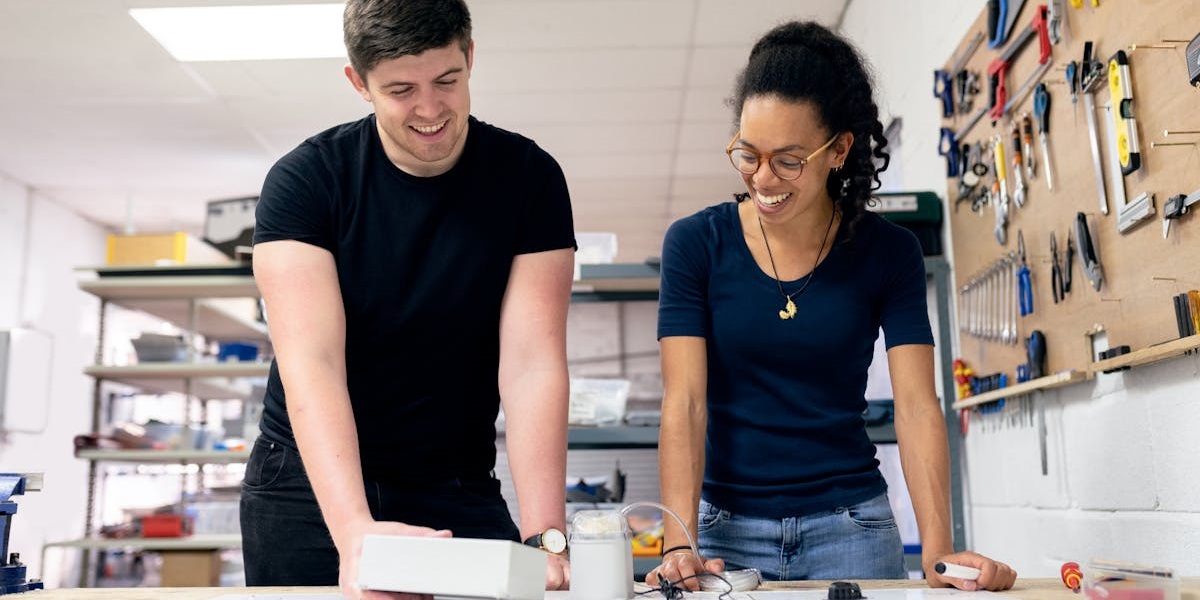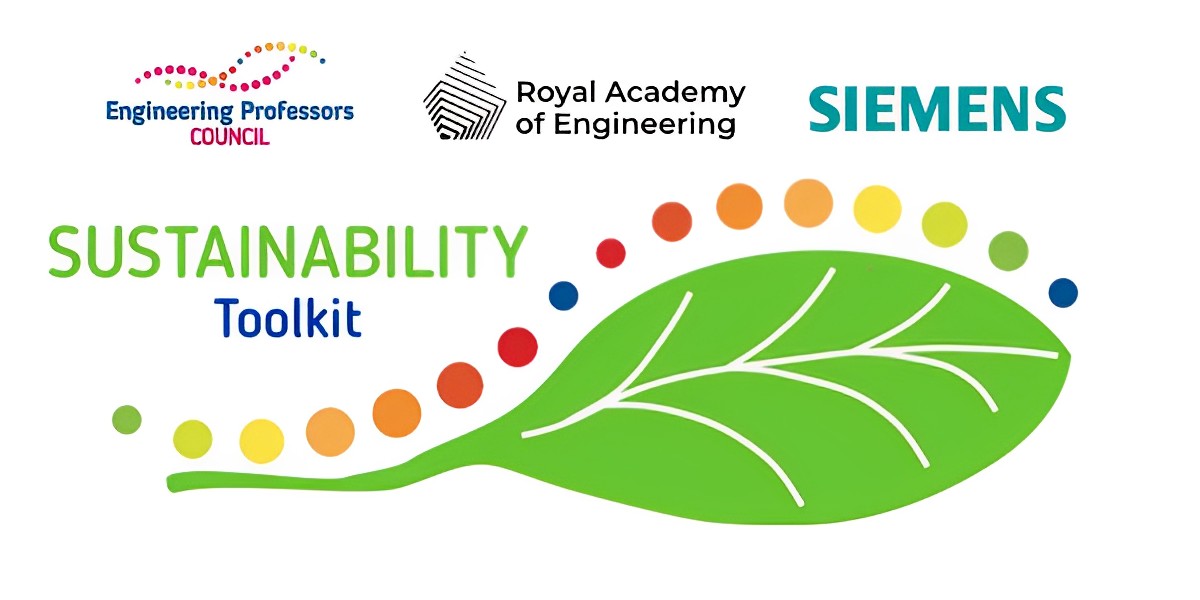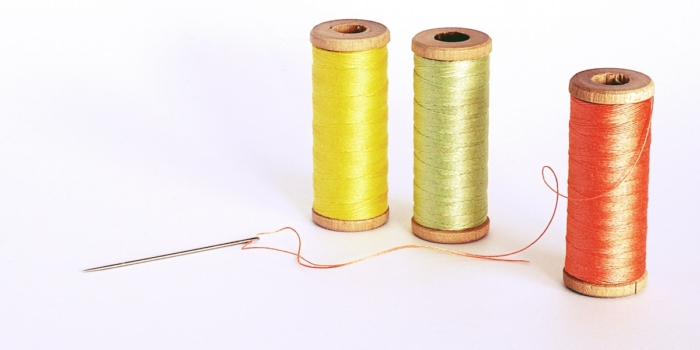Authors: Peter Mylon MEng PhD CEng FIMechE PFHEA NTF and SJ Cooper-Knock PhD (The University of Sheffield).
Topic: Maker Communities and ESD.
Tool type: Knowledge.
Relevant disciplines: Any.
Keywords: Interdisciplinary; Education for sustainable development; Makerspaces, Recycling or recycled materials; Employability and skills; Inclusive learning; Local community; Climate change; Student engagement; Responsible consumption; Energy efficiency; Design; Water and sanitation; AHEP; Sustainability; Higher education; Pedagogy.
AHEP mapping: This resource addresses two of the themes from the UK’s Accreditation of Higher Education Programmes fourth edition (AHEP4): The Engineer and Society (acknowledging that engineering activity can have a significant societal impact) and Engineering Practice (the practical application of engineering concepts, tools and professional skills). To map this resource to AHEP outcomes specific to a programme under these themes, access AHEP 4 here and navigate to pages 30-31 and 35-37.
Related SDGs: SDG 4 (Quality education); SDG 6 (Clean water and sanitation); SDG 11 (Sustainable cities and communities); SDG 12 (Responsible consumption and production); SDG 13 (Climate action).
Who is this article for? This article should be read by educators at all levels in higher education who are curious about how maker spaces and communities can contribute to sustainability efforts in engineering education. Engaging with this topic will also help to prepare students with the soft skill sets that employers are looking for.
Premise:
Makerspaces can play a valuable role in Education for Sustainable Development (ESD). In this article, we highlight three specific contributions they can make to ESD in Engineering: Makerspaces enable engineering in real-world contexts; they build cross-disciplinary connections and inclusive learning; and they promote responsible consumption.
A brief introduction to makerspaces:
In recent years, a ‘makerspace’ movement has emerged in Higher Education institutions. While most prevalent in the US, there are now a number of university-based makerspaces in the UK, including the iForge at the University of Sheffield, the Institute of Making at UCL, and the Makerspace at King’s College London. So what is a makerspace, and what do they have to do with Education for Sustainable Development (ESD)?
Makerspaces are part of a larger “maker movement” that includes maker fairs, clubs and magazines. Within universities, they are “facilities and cultures that afford unstructured student-centric environments for design, invention, and prototyping.” (Forest et al., 2016). Successful and inclusive makerspaces are student led. Student ownership of makerspace initiatives deepens student motivation, promotes learning, and encourages peer-to-peer collaboration. Successful makerspaces produce thriving learning communities, through which projects can emerge organically, outside of curriculum structures and discipline boundaries.
In terms of Education for Sustainable Development (ESD), this means that students can bring their passion to make a difference, and can meet other students with similar interests but complementary skill sets. With support from the University, they can then be given opportunities to put their passion and skills into practice. Below, we focus on three concrete contributions that makerspaces can make to ESD: Opportunities for applied learning; expanded potential for cross-disciplinary learning, and the chance to deepen engaged learning on sustainable consumption.
1. Maker communities enable engineering in real world contexts:
1.1 ESD rationale
ESD enables students to think critically about possible solutions to global challenges. It encourages students to consider the social, economic, and political context in which change takes place. ESD also spurs students to engage, where possible, with those beyond the university.
It may be tempting to think of engineering as simply a technical exercise: one in which scientific and mathematical knowledge is taken and applied to the world around us. In practice, like all other professions, engineers do not simply apply knowledge, they create it. In order to do their work, engineers build, hold, and share ideas about how the world works: how users will behave; how materials will function; how they can be repaired or disposed of; what risks are acceptable, and why. These ideas about what is reasonable, rational, and probable are, in turn, shaped by the broader social, political, and economic context in which they work. This context shapes everything from what data is available, to what projects are prioritised, and how risk assessments are made. Rather than trying to ignore or remove these subjective and context-based elements of engineering, we need to understand them. In other words, rather than ask whether an engineering process is impacted by social, political, and economic factors we need to ask how this impact happens and the consequences that it holds. ESD encourages students to think about these issues.
1.2 The contribution of makerspaces
The availability of both equipment and expertise, and the potential for practical solutions, means that makerspaces often attract projects from outside the university. These provide opportunities to practise engineering in real-world contexts, where there is the possibility for participatory design. All such projects will require some consideration of social, political, or economic factors, which are at the heart of the Sustainable Development Goals.
One example of this is SheffHEPP, a hydroelectric power project at the University of Sheffield. In response to requests for help from local communities, students are designing and building small-scale hydroelectric power installations in a number of locations. This multidisciplinary project requires an understanding of water engineering, electrical power generation, battery storage and mechanical power transmission, as well as taking into consideration the legal, financial, and environmental constraints of such an undertaking. But it also requires Making – students have made scale models and tested them in the lab, and are now looking to implement their designs in situ. Such combinations of practical engineering and real-world problems that require consideration of the wider context provide powerful educational experiences that expose students to the realities of sustainable development.
There are a number of national and international organisations for students that promote SDGs through competitions and design challenges. These include:
- Engineers Without Borders – an international organisation with branches at many UK universities, which runs, amongst other things, the ‘Engineering for People Design Challenge’
- Shell EcoMarathon – a vehicle design competition focused on energy optimisation
- Cybathlon – a platform that challenges teams globally to develop assistive technologies suitable for everyday use, with and for people with disabilities
Student engagement with such activities is growing exponentially, and makerspaces can benefit students who are prototyping ideas for the competitions. At Sheffield, there are over 20 co-curricular student-led projects in engineering, involving around 700 students, many of which engage with the SDGs. In addition to SheffHEPP and teams entering all of the above competitions, these include teams designing solutions for rainwater harvesting, vaccine storage, cyclone-proof shelters for refugees, plastics recycling, and retrofitting buildings to reduce energy consumption. As well as the employability benefits of such activities, students are looking for ways to use engineering to create a better future, with awareness of issues around climate change and sustainability increasing year on year. And none of these activities would be possible without access to maker facilities to build prototypes.
Linked to the makerspace movement is the concept of hackathons – short sprints where teams of students compete to design and prototype the best solution to a challenge. At Sheffield, these have included:
- Hackcessible – an assistive technology hackathon where students work with disabled members of the community to design bespoke solutions to problems that fall outside of the scope of healthcare provision;
- The Biodigester Hackathon – finding the best way to convert waste from the University’s Diamond building into energy;
- The Rice Seeder Design Challenge – working with a social enterprise in Cambodia to improve the design of traditional rice seeders in order to increase productivity.
In summary, Makerspaces enable students to access multiple initiatives through which they can engage in learning that is potentially participatory and applied. These forms of learning are critical to ESD and have the potential to address multiple Sustainable Development Goals.
2. Maker communities build cross-disciplinary connections and encourage inclusive learning:
2.1 ESD rationale
Global complex challenges cannot be resolved by engineers alone. ESD encourages students to value different forms of knowledge, from within and beyond academia. Within academia, makerspaces can provide opportunities for students to collaborate with peers from other disciplines. Cross-disciplinary knowledge can play a crucial role in understanding the complex challenges that face our world today. Makerspaces also offer an opportunity for students to engage with other forms of knowledge – such as the knowledge that is formed through lived experience – and appreciate the role that this plays in effective practices of design and creation. Finally, makerspaces can help students to communicate their knowledge in ways that are understandable to non-specialist audiences. This inclusive approach to knowledge creation and knowledge sharing enables students to think innovatively about sustainable solutions for the future.
2.2 The contribution of makerspaces
Cross-disciplinary spaces
Student-led makerspaces encourage students to lead in the creation of cross-disciplinary connections. For example, at the University of Sheffield, the makerspace has primarily been used by engineering students. Currently, however, the students are working hard to create events that will actively draw in students from across the university. This provides students with a co-created space for cross-disciplinary exchange as students train each other on different machines, learning alongside each other in the space. At other times, staff from different disciplines can come together to create shared opportunities for learning.
The cross-disciplinary nature of makerspaces and the universality of the desire to create encourages a diverse community to develop, with inclusivity as a core tenet. They can often provide opportunities for marginalised communities. Makerspaces such as the ‘Made in Za’atari’ space in Za’atari refugee camp have been used to give women in the camp a space in which they can utilise, share, and develop their skills both to improve wellbeing and create livelihoods. Meanwhile, projects such as Ambessa Play have provided opportunities for young people in refugee camps across the world to learn about kinetic energy and electronic components by creating a wind-up flashlight.
Spaces of inclusive learning
Maker projects also allow students to engage with their local communities, whether creating renewable energy installations, restoring community assets or educating the next generation of makers. Such projects raise the profile of sustainable development in the wider public and give students the opportunity to contribute to sustainable development in their neighbourhoods.
3. Maker communities promote responsible consumption:
3.1 ESD rationale
ESD does not just influence what we teach and how we teach; it also shapes who we are. A central tenet of ESD is that it helps to shape students, staff, and educational communities. When this happens, they are – in turn – better able to play their part in shaping the world around them.
3.2 The contribution of makerspaces
Even before the concept was popularised by the BBC’s ‘The Repair Shop’, repair cafes had begun to spring up across the country. Such facilities promote an ethos of repair and recycling by sharing of expertise amongst a community, a concept which aligns very closely with the maker movement. Items repaired might include furniture, electrical appliances, and ornaments. Related organisations like iFixit have also helped to promote responsible consumption and production through advocacy against built-in obsolescence and for the ‘Right to Repair’.
The same principles apply to Making in textiles – sustainable fashion is a topic that excites many students both within and outside engineering, and makerspaces offer the opportunity for upcycling, garment repair and clothes shares. Students can learn simple techniques that will allow them to make better use of their existing wardrobes or of used clothing and in the process begin to change the consumption culture around them. At the University of Sheffield, our making community is currently planning an upcycled runway day, in which students will bring clothing that is in need of refresh or repair from their own wardrobes or from local charity shops. Our team of peer-instructors and sewing specialists will be on hand to help students to customise, fit, and mend their clothes. In doing so, we hope to build an awareness of sustainable fashion amongst our students, enabling an upcycling fashion culture at the university.
Conclusion:
Education for Sustainable Development plays a vital role in enabling students to expand the knowledge and skills that they hold so that they can play their part in creating a sustainable future. Makerspaces offer a valuable route through which engineering students can engage with Education for Sustainable Development, including opportunities for applied learning, cross disciplinary connections, and responsible consumption.
References:
Forest, C. et al. (2016) ‘Quantitative survey and analysis of five maker spaces at large, research-oriented universities’, 2016 ASEE Annual Conference & Exposition Proceedings [Preprint]. (Accessed 19 February 2024).
This work is licensed under a Creative Commons Attribution-ShareAlike 4.0 International License.
Any views, thoughts, and opinions expressed herein are solely that of the author(s) and do not necessarily reflect the views, opinions, policies, or position of the Engineering Professors’ Council or the Toolkit sponsors and supporters.
To view a plain text version of this resource, click here to download the PDF.





